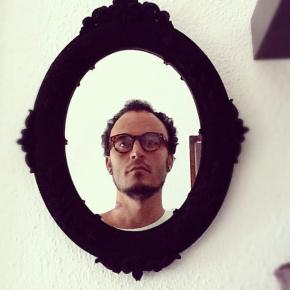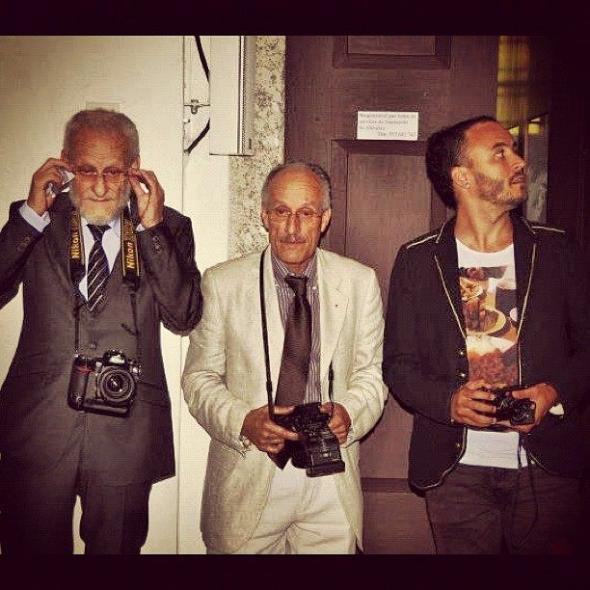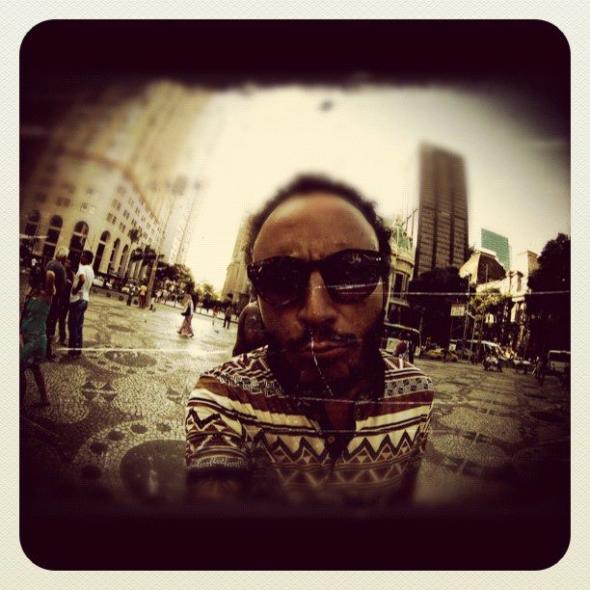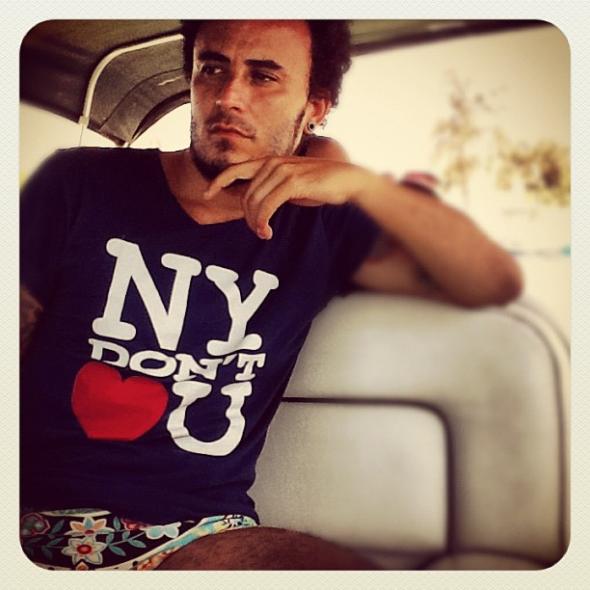Sérgio Afonso The boy with the camera and the camcorder
 Sérgio Afonso only came back to Angola in 1982. His aim then was to get to know his homeland, now independent. Behind him were 7 years of travelling, forced on him by the war. He was born in Huambo in the very year of independence (1975), and he had left that November, when things were still complicated, taken by a family that had to flee the country because of the armed struggle. “It was a year full of turbulence and turmoil” – and Sérgio Afonso was still extremely youing. Not leaving that city on the high plains at that time would have meant “not being here now to tell the tale.”
Sérgio Afonso only came back to Angola in 1982. His aim then was to get to know his homeland, now independent. Behind him were 7 years of travelling, forced on him by the war. He was born in Huambo in the very year of independence (1975), and he had left that November, when things were still complicated, taken by a family that had to flee the country because of the armed struggle. “It was a year full of turbulence and turmoil” – and Sérgio Afonso was still extremely youing. Not leaving that city on the high plains at that time would have meant “not being here now to tell the tale.”
Following this baptism of fire that he went through, I asked him about his journeys, and he recalled the time when he lived in the house of one of his parents’ friends in the quiet seaside town of São Pedro de Moel. He did his first year of schooling, and enjoyed his time here. On his return to Angola, the family settled in the Mártires de Kifangondo neighbourhood, near the 4 de Fevereiro airport, but Sérgio chose the Praia do Bispo neighbourhood as he grew up, and here he had great friends, among them Bruno, Mano, Dinda, Duxa, Capeló, Kayundo, Kazuko, Paulo Cambaieta (otherwise known as Paulo Silva, now no longer in the Angola football squad). His childhood was one long string of discoveries – creative games far removed from today’s consoles and monitors. In those days, it was more street-based, football and kicking cans. “In fact, the best times were when we played at ‘war in the neighbourhood’, and we built our bases on the hill where the new parliament is being built. They were really good times.”
 family of photographers Pinto Afonso
family of photographers Pinto Afonso
Sérgio grew up with photography all around him. His father and his uncles were all photographers, but, as he explains, he didn’t take to the idea of “taking photos of people for their documents. That was my definition of Photography.” When he got his first camera, in 1992, he began to take photos of his school friends, and he is still proud of his work then. This was a period when he was teaching himself. “I didn’t know then how to measure light, but as I experimented, I became more and more passionate about the art of photography” – and this became greater than he appreciated in those early days.
He began to take his camera with him every day, and ways of seeing the world helped him to view people from another angle. “I enjoy travelling, meeting new people every day. If I could, I would spend my life discovering the world and taking photos of it.” It’s discovering things that makes him move. What really gets him going when travelling across the country is the beauty of Angola at all levels: the landscape, the people, ways of living, being and doing things. “We are forever finding a story to tell and learn from. Getting to know my country is in truth what really motivates me.” And with this he links art to photo-journalism, because “we can just as well use real facts to build works of art as we can produce something to mirror real facts. I use life itself to make art.”
And now for the cinema
With his experience of the world opening up, he went to Rio de Janeiro to study film-making, because after some years working with photography in Angola, he had discovered video, which he describes as “upgrading photography, only at 24 frames per second.” In other words, “it’s a matter of continuing my work in other moulds, while focusing on what people see and the way they look.”
Brazil taught him how to create with scant resources. At school, in the wake of the new Brazilian film wave, he learnt how to make small budget films, under the byline “an idea in the mind and a camera in the hand.” He stayed in Rio de Janeiro for four years, and it gave him real motivation, in a country where “the prospects really strike me as very good. Culture gets the backing of the federal governments, and good backing from the private sector.”
From his house in Ipanema, Sérgio maintains a happy daily routine of classes, walkabouts, surfing and skating, with a watchful eye on the features of such a striking city. On the downside, he felt “the big discrimination between the rich and the poor, between the whites and the blacks. You can feel these negative vibes when you go into one of the shopping malls on the south side,” he says emphatically.

Currently, he is taking his first steps in the art of film-making, but he’s in no hurry. “I would like to mature more over time, to learn more and then, who knows, make some shorts. Sérgio Afonso really isn’t prey to the haste factor, to such an extent that he sings the words of a Brazilian song: “my mother taught me to tread slowly on this floor”…
He is passionate about the real world around him, and it is for this reason that he has chosen the documentary as a way of portraying society. His periods of creative and imaginative work are offset by periods focused on advertising – he needs to pay for his keep. “This is the reality of being a film-maker. It’s not possible to live only from this (at least not yet). Who knows, one day”…
I ask him if he thinks that the younger generation is bringing a new vision, new tools, able to work in the socio-cultural dynamics of Angola. And he answers that the production company that he is part of, Generation 80, was born under a very good star: “there is a crisis in the world, money is for some people ever more difficult to get, but technology is also more at hand for everybody. There are advantages in these days of bureaucracies and problems getting a foot in the door – you don’t need an investment of millions to work in this field and to make a film with a camcorder.”
In terms of links with his country, he believes there is a need to create “a new Angola”. In his opinion the time has come to get rid of the pejorative expression “this is what Angola is like”, when you come up against problems in producing “good things in the country.” Sérgio Afonso notes that in the field of culture, there is still a shortage of theatres, cinemas, schools of art, cultural centres and so on. “But I think the new projects for Luanda will make things better. The war slowed down the process tremendously, and now we have to run very fast to get on the development train. But I have faith – I think we can do it.”

Sérgio Afonso devotes his free time to his family, to the love of his companion Joana Afonso, to his love of surfing and skating on Luanda’s beaches – “it’s a good way to keep fit without being locked away in a gym.” Whenever he can, he travels, across Angola and the world. Sérgio Afonso has a well balanced temperament, with a mix of tranquility, restlessness and creative urges. The combination gives him no time to stand still.
Austral nº 91 (maio, junho 2012)
Sérgio Afonso’s Galeria in BUALA